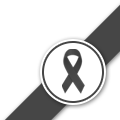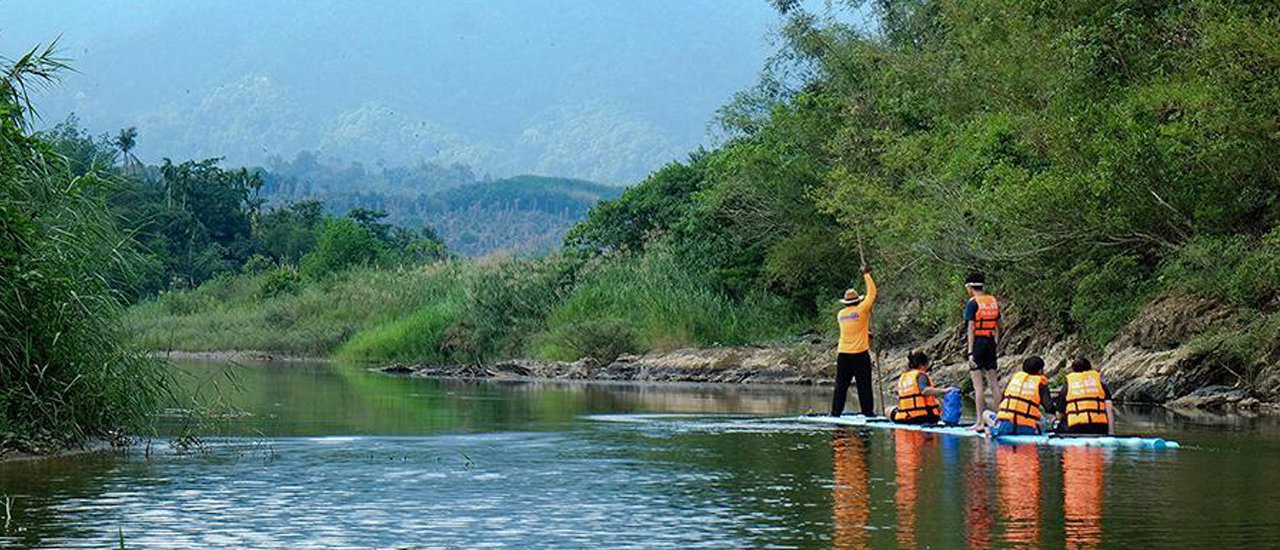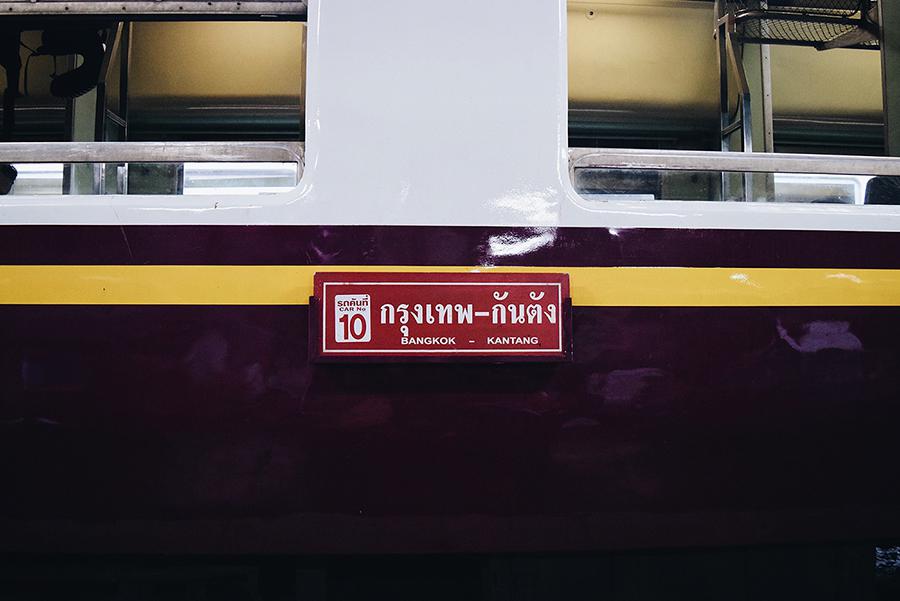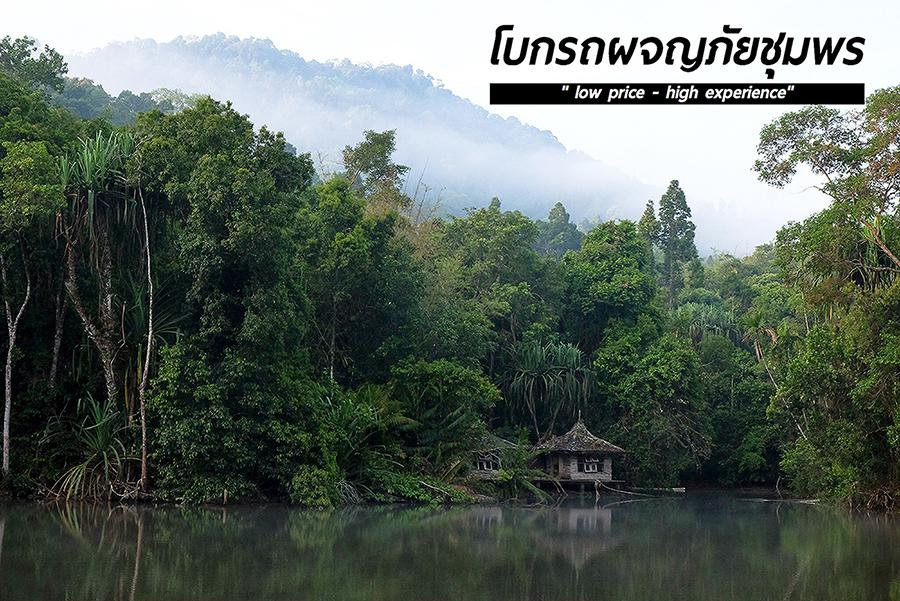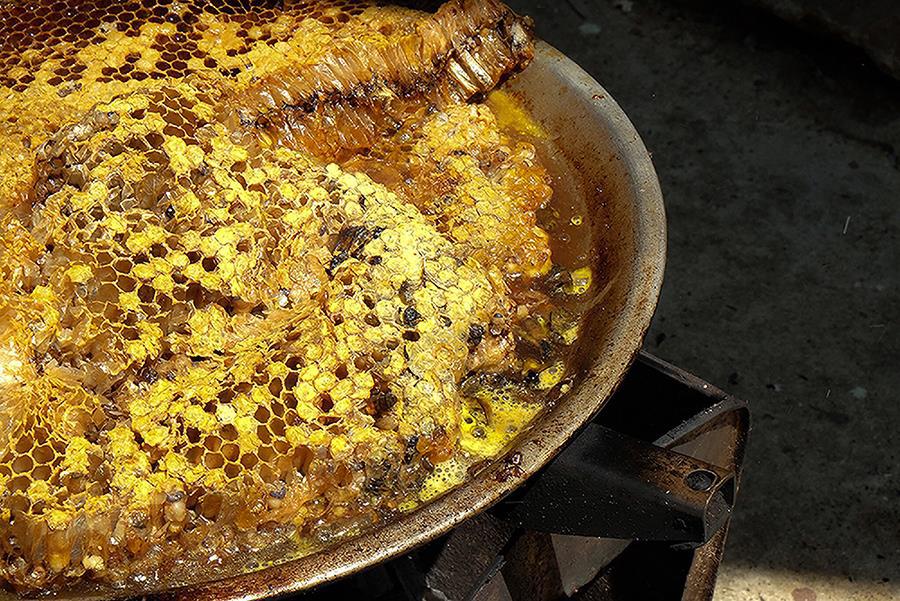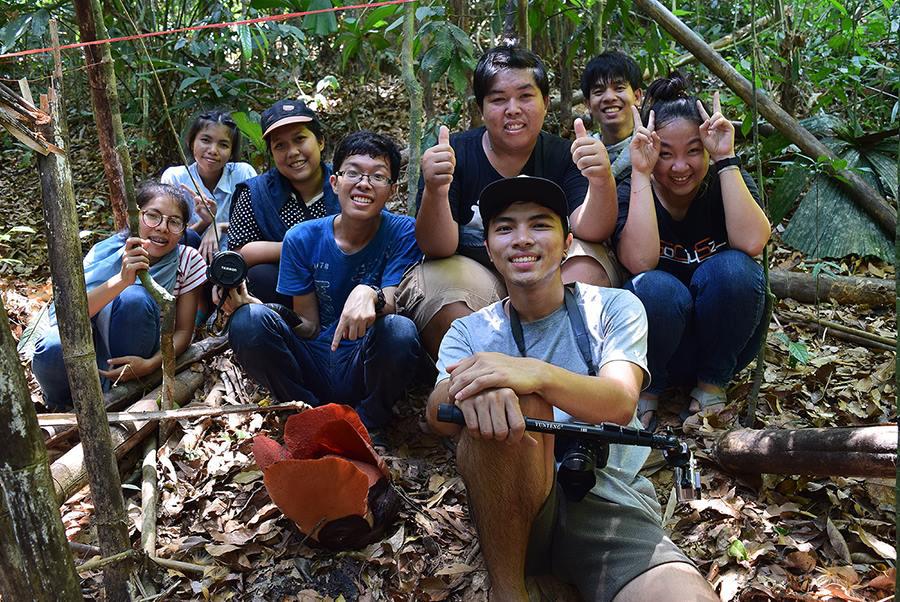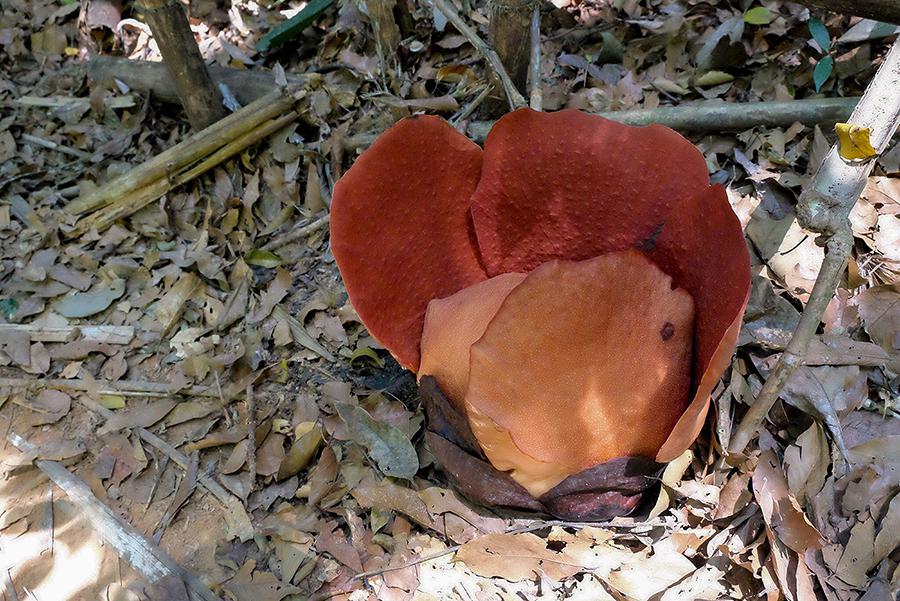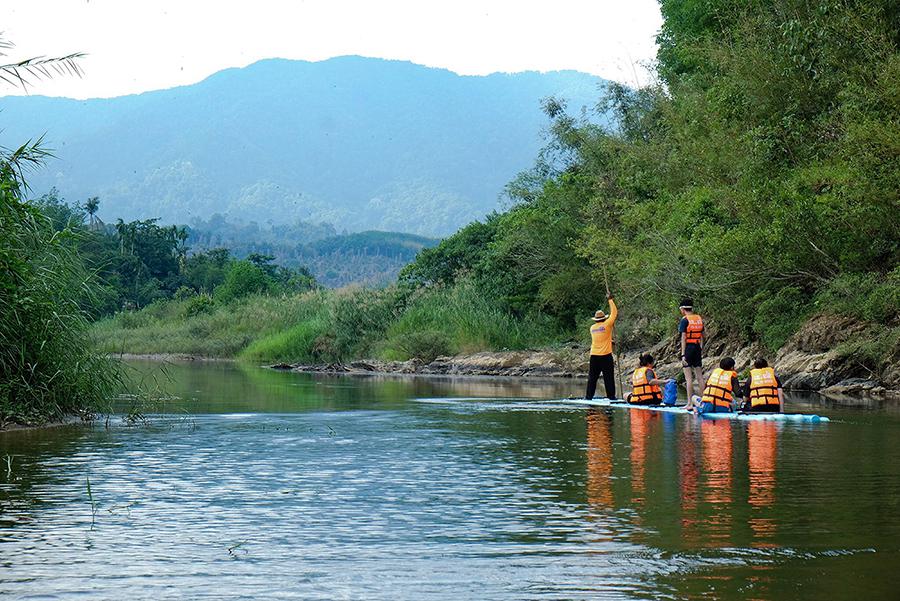[ ISARA BACKPACKER ]
If you ask what the purpose of the trip is,
The answers from many people would probably come out in many different ways.
But the meaning of this trip for us is
...
"We set out on a journey, living life the way we want to be."
To experience and learn about the way of life, culture, and nature.
And it wouldn't be difficult at all for us to find a place that meets our needs this time.
...
Hello Chumphon
A city that should not be just a passing city
With the episode titled "Hitchhiking Adventure in Chumphon"
Check out this short clip first

This trip originated from a subject we were taking, playfully called "Gen Tourism (Bang Mod elective)".
We formed a group of 5 people + 3 people who joined the trip = 8 people who would go on an adventure in Chumphon together.
...
Traveling to Chumphon
We traveled by train number 167: Our destination station is Lang Suan Station: The price for third class is around 250 baht.
Departing from Hua Lamphong Station at 6:30 PM, arriving at Lang Suan Station at 5:30 AM.

The first morning in Chumphon
Started with southern curry in the morning market
I must say it was so spicy that I had to beg for my life.

- April 9th, an adventure that seemed to have a plan –
(The plan was to go rafting at one o'clock in the afternoon and find a place to pitch a tent somewhere)
We set off from the front of the market by waving at people passing by
which had the first destination of the wave at the mouth of the road on the main road

It took about 20 minutes for a kind adult to stop and pick us up as the first car.
Coincidentally, he was going the same way as us.
So, the uncle volunteered to drop us off halfway to catch a ride to Phato.
(Much further than we had planned to hitchhike)
The uncle is not from Chumphon, but he has been working in Chumphon for a long time and has fallen in love with the place.
So he found a place to do gardening and live in Chumphon after retirement. Uncle told us that Phato has a rich forest.
This makes the Lang Suan River have water to use all year round, unlike other places that are not as dry. (The uncle is currently 73 years old, but he still looks young.)

As we drove towards Phato, we were amazed by the natural beauty that surrounded us.
The roadside was lined with mountains, trees, and clouds of mist.
The air was so fresh and clean that it felt like we were breathing in pure oxygen.
...Who would have thought that we would encounter fog during such extreme heat?...

It's time to thank and say goodbye to the kind uncle who was the first to pick us up.
On to the next hitchhiking destination… I don't know where we'll be pitching our tent tonight.
But we're heading to the Phato Water Management Unit first, which we don't have any information about.
We haven't seen any pictures of the place, we're just going to see what it's like and if we can sleep there.

After waving for about 10 minutes, I got another car whose destination was Ranong Province.
Which had to pass the water management unit just in time.

Around 10.00 am.
This is the "Phato Water Management Unit"
We must have thought the same thing when we looked in.

It was quiet and far from the houses of people. We walked in confused.
Then I met an officer.
We asked the officer about the location of the raft, and found that it was quite far from the unit.
We thought about carrying our stuff and hailing a ride back to the point we had already passed.
But let's take a picture and rest at the pavilion by the river for a while.
ZZZZZZZZZZZZZZZZZZZZZZZZ

While some people were taking pictures, they met a man named "Khai Nui".
Khai Nui was boiling a honeycomb that he had gotten from the villagers.
This is a normal way of life for people who live near the forest.
Khai Nui explained that to collect honeycombs, villagers light fires and the bees fly towards the light.
Then they collect the combs, which have two parts: one with nectar and one with larvae.
What Khai Nui was doing was boiling the comb with larvae to get the larvae out.
He can then store them to eat or use in cooking.
I tried it, and the taste and texture were similar to eating short caterpillars that are sold at fried insect shops, but a bit more oily.

Our luck struck again when another kind soul saw us sleeping at the pavilion like people without a purpose. He came to talk to us and asked about our travel plans, which were simply to go bamboo rafting at Phato at one o'clock in the afternoon and find a place to pitch our tent. Taking pity on us, he volunteered to show us around for the rest of the day.

Start by walking the nature study trail at the Phato Water Management Unit.
The forest is quite dense and very steep.
We came across the blooming lotus flower, which is the highlight of this place.

In the afternoon, I had lunch and then went on a PVC raft.
It took a total of 2 hours, all along the two sides of the Lamphun River.
It has truly enriched some parts of our lives.

Get up close and personal with nature, whether it's floating down the river
Dive into the water, breathe in the fresh air, admire the beautiful scenery, and we still see
The lives of the P'to people are deeply intertwined with the waters of this river.
And these are just some of the images that we captured by pressing the shutter.



In the evening, I looked for food to eat.
And then I came to lie down and watch the stars at sea. I woke up early to see the good atmosphere.
With free accommodation but the view is extraordinary both before bed and when I wake up.
... Sala by the water - Phato Water Management Unit ...




Pah Toh Watershed Management Unit
It is an agency that takes care of the Phato forest, which is an important watershed forest in Chumphon.
This requires the cooperation of the villagers to help each other.
To prevent people from destroying the forest and hunting animals as well.
On the morning of April 10th,
We waved goodbye to our old accommodation.
Then we divided into two teams of four people each to hitchhike.
Our destination for hitchhiking today is "Koh Pitaak".

Our two teams coincidentally waved to each other at the main road intersection before turning into Phato.
The main road is quite difficult to hail a taxi, waiting for about 30-40 minutes in the sun.
Then take a car to the entrance of Ko Pitaak Pier.
...
The path to the port was eerily quiet.
We could only wait, wait, wait, and wait until we met the kind-hearted red pickup truck drivers.
Let's take a group photo as a token of our appreciation.
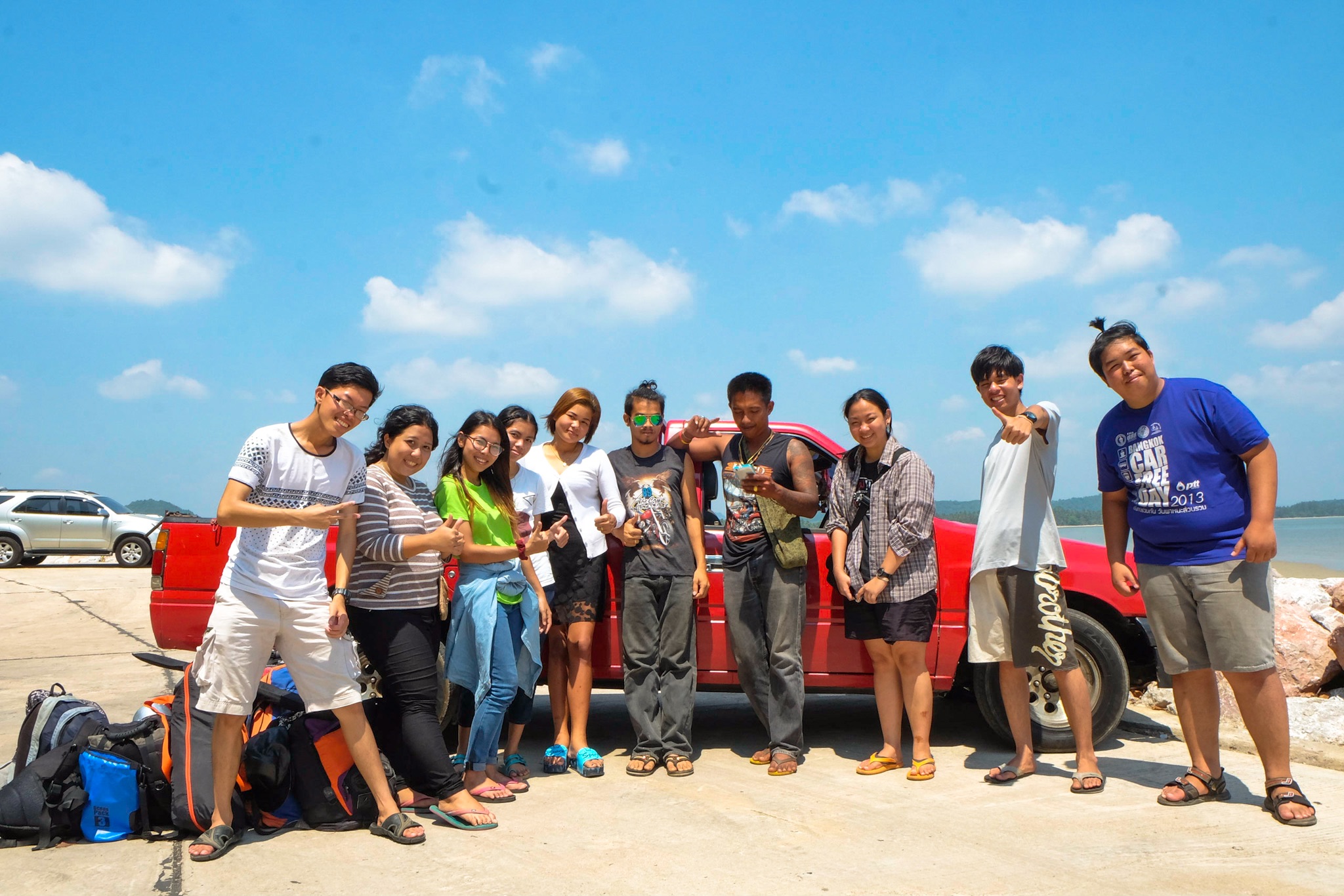
We have already booked a homestay in advance.
Upon arrival, simply call for a boat to pick you up.
The distance between the port and the island is only about
Only 1 kilometer away, so it won't take long to wait.

Ko Pida is an island formed by the union of villagers.
Transform this place into a conservation-oriented tourist destination.
This goes hand in hand with the fishing profession itself.
As for the name of this island, there is a story that...
People were sailing past this island when they saw someone shouting for them to come ashore.
The boat stopped there, but I didn't see anyone.
Soon after, the monsoon arrived.
After that, this island was called "Ghost Island".
It was then renamed to "Ko Pidaeng" in the present day.


The price of accommodation with three meals is divided into two types.
1. Sleeping on a mosquito net with a mattress on the front porch that extends out to the sea will be 600 baht.
(I don't sleep with other people, it's just not a room)
2. But if you sleep in a closed room, it will be 700 baht.
The bathroom is shared.
And importantly, the villagers also stay in the same house as us, but they will set up mosquito nets in the area behind the house.
For those who enjoy cooking, you can also help the villagers cook.
It can be said with confidence that "For a genuine homestay experience, Koh Pitaak is the place to be."

Upon arriving at the island, we had lunch
and took a nap before going out for a refreshing swim.
The price for a chartered boat is 700 baht, which can accommodate 10 people.
The cost of diving equipment is 50 baht per set.

It took about two hours to get back to the accommodation.
And enjoy the evening atmosphere of this island from the balcony of the homestay.


After dinner, it was time to go squid fishing.
(The price for a private boat is 700 baht, including equipment.)

I'm not feeling very creative today.
Only one squid was caught due to the unfavorable weather.
But I also had a chat with the boat driver while squid fishing.
This has led to the knowledge that the income generated by each homestay and boat
A 3% deduction will be made to the community's central fund.
To be used for island care, as a scholarship for children.
and used to care for the elderly on this island
Which is a story that I must admit,
This community is a community that can coexist with a direction.
and the management in various matters is very good.
On the last morning at Koh Pitaak,
We spent our time exploring the island.

People here still spend time fishing.
That is, the processing of various foods and equipment for catching marine animals.


This is a translation of processed food highlights from the village headman's account.
That is the process of burying mackerel in the sand.
which is the wisdom of the villagers who use the heat accumulated in the sand
It really helps to dry the fish. There are only a few places in Thailand that can do this.
Unfortunately, there was no performance today, so I wasn't able to capture any images to share with you.


Before returning, enjoy a paddle boat ride for only 50 baht per hour.

Around noon, we packed our things and boarded the boat back to shore.
Farewell, Ko Pida...
As the boat docked, we were greeted by the kind-hearted elder of Chumphon, "Mae Patch," the mother of one of our fellow trip members. We asked Mae Patch to take us to our accommodation for the night, "Hat Tung Wua Laen," located in Pathio district. Our accommodation for the night was by the beach, and the owner was a friend of Mae Patch, so we got a special rate. On the way, Mae Patch took us to "Pak Nam Lang Suan" for lunch.
Our lunch was chicken rice from "Jay Tuk's" restaurant. I must say, the chicken here was tender and juicy, and the dipping sauce was delicious, with both spicy and non-spicy options. After lunch, we headed to our next destination.
We arrived at Hat Tung Wua Laen! It was late afternoon in April, so swimming now would definitely lead to sunburn. We decided to rest and recharge first. ZZZZzzzzzzzz

5:00 p.m. The sun is setting and the wind is dying down.
It's time to explore the area around the beach.
"Tung Wua Laen Beach" boasts pristine white sand, fine grains, and is one of the four hundred miles of beautiful sandy beaches.
Tung Wua Laen Beach in the evening
The atmosphere looks fun and refreshing.
There are both
Shellfish gatherer, crab hunter
Children are playing in the water.
The little boy built a sandcastle.
The family is having a picnic by the beach.
etc.


This evening, we would like to thank our main sponsor once again, as always, Khun Patch. Khun Patch said, "When you come to the sea, you have to eat seafood." So she arranged a big set for us, including grilled fish, large river prawns, cockles, ark shells, and the indispensable stir-fried Leea indica with eggs, a local dish.

The morning of April 12th
Spending the night by the sea
I can't forget, I have to wake up to the sunrise.
Tung Wua Laen Beach in the morning
The atmosphere seems peaceful and quiet.
People who exercise
People playing in the water
The dog is running and playing.
The crab walks slowly.



In the late morning, my mother picked me up and took me to her house.
My friend's house is located in the city center of Chumphon.
So we walked to eat Southern Thai food that looked old.
It's a restaurant called "Kwang Heng".

Followed by soybean milk at the "Yen Sa" shop
This shop is special because the soy milk is topped with quail eggs cooked in a sweet tamarind broth.

After a satisfying lunch, in the afternoon, my father volunteered to take us on a tour of the city center instead of my mother. The first place we visited was the Krom Luang Chumporn Shrine, which houses the memorial of Admiral Prince Abhakara Kiartivongse, Prince of Chumporn, or as sailors call him, "Father Sea." From here, we had a clear view of the Haad Sai Ree beach.


Next, we headed to "Khao Chaomueng".
Khao Chao Mai is another place where you can enjoy the beautiful scenery of the islands.

And the last place we will sit is "Khao Matree Viewpoint"
This is a viewpoint where you can see the city of Chumphon in 360 degrees.
Both Paknam Chumphon, Chumphon Sea, Khao Noi Yai Chumphon
This place is perfect for watching the sunrise and sunset.




As the sun sets, it's almost time for us to head back.
We went back to our friend's house to get our belongings.
Then my mom had already cooked dinner for us.
It was a delicious "kway chap".

And then it was time for us to go back.
We would also like to express our sincere gratitude and greetings to our parents.
which has taken care of us and fed us for many meals now.


Rittirong Sanitkum
Friday, September 27, 2024 10:02 AM
